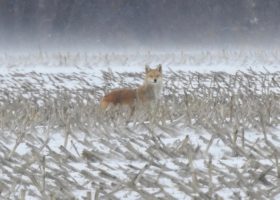
January 2019 Photo-observation of the Month
Congratulations to Cat Abbott for winning the January 2019 Vermont Atlas of Life iNaturalist photo-observation of the month. The image of an Eastern Coyote staring at the camera in a marvelous winter scene was the most popular photo-observation.
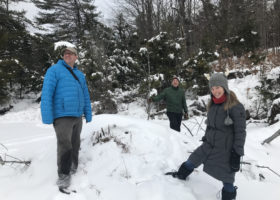
Outdoor Radio: Winter World of Beavers
Even during the coldest days of winter a beaver family remains warm and protected in the lodge. They’ve prepared a cache of food under the ice just outside the lodge to snack on all winter. And they’ve feasted all summer and fall to build a store of fat in their tails as a reserve too. It’s a long, dark winter for the beavers, but they’re prepared. In this month’s episode of Outdoor Radio, join us on a frozen beaver pond in Pomfret, Vermont. as we explore what winter is like for a beaver family.
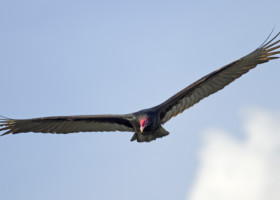
Field Guide to February 2019
This month, wildlife and the rest of us here in New England will cross a threshold – arbitrary yet not insignificant: 10 hours of daylight. Even though we’ve got lots more winter, at least the sound of spring is in the air. So here’s a Field Guide to February to help get your hopes up, no matter what that sleepy woodchuck predicts.
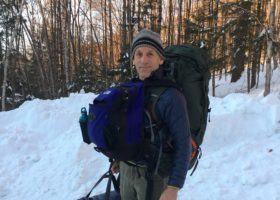
From Snowbanks to Cloud Forests: Chris Rimmer is Cuba Bound
VCE’s Chris Rimmer is bound for eastern Cuba. He’ll trade a foot-plus of new snow and subzero temperatures for humid cloud forests and Cuban Trogons.
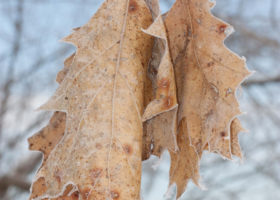
Help Us Map and Identify Oak
Ready to participate in science? We have a job for you! Your mission is to record as many observations of oak trees (in the wild) throughout Vermont as possible in the Vermont Atlas of Life on iNaturalist. Together, we can create a basemap of oak distribution for comparison now and into the future.
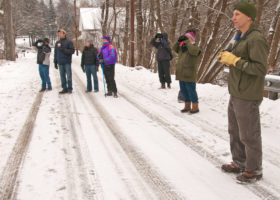
2019: Norwich Year of the Bird
Norwich 2019 Year of the Bird is underway. This is an informal (but serious) challenge to birders to explore the avian diversity of Norwich, get outdoors, share the thrill of discovery, and learn. The collective goal is to document 175 species within the town’s borders during 2019. A special web page will allow everyone to keep track and share their sightings through Vermont eBird. Grab your binoculars and join the quest!
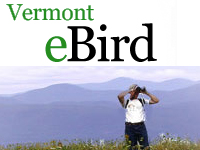
The 2018 Vermont eBird County Quest Awards
From a tiny Northern Saw-whet Owl in Ripton on January 1st to a Snowy Owl on the Burlington Waterfront on New Year’s Eve, Vermont birders scoured fields and fens, mountains and meadows, lakes and lawns to discover as many bird species as possible during the 8th annual Vermont eBird County Quest.
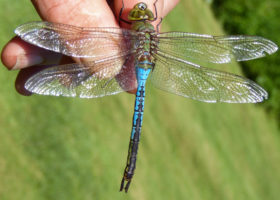
Move over Monarchs: VCE and Colleagues Reveal Astonishing Dragonfly Migration
A recent study examines the chemistry locked in dragonfly wings to uncover the surprising annual migration of the Common Green Darner.
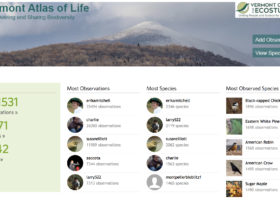
Vermont Atlas of Life on iNaturalist Builds Biodiversity Big Data in 2018
In 2018 almost 2,400 naturalists contributed nearly 72,000 observations representing more than 3,100 species verified. Over 1,940 naturalists helped to identify and verify data.
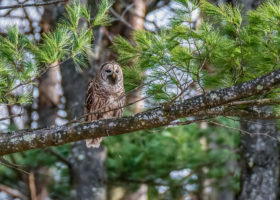
December 2018 Photo-observation of the Month
Congratulations to Kyle Tansley for winning the December 2018 Vermont Atlas of Life iNaturalist photo-observation of the month. The image of a Barred Owl with a rodent in its bill was the most popular photo-observation.
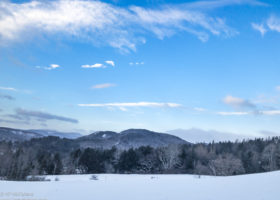
Field Guide to January 2019
Although the days are slowly growing longer, life in the Northeast now finds itself in the coldest depths of winter. Here’s a few tidbits of natural history happening outdoors this month around you.
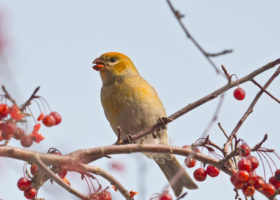
Outdoor Radio: Pine Grosbeak Irruption
In this episode of Outdoor Radio, join us as we chase after Pine Grosbeaks and learn about winter finch irruptions.
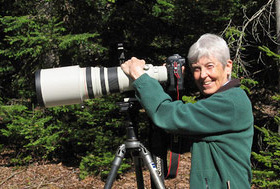
VCE Presents the 2018 Julie Nicholson Citizen Scientist Award
For her many contributions to advancing wildlife conservation as a volunteer citizen scientist, the staff and board of VCE are proud to present Elinor with the 2018 Julie Nicholson Citizen Scientist Award.
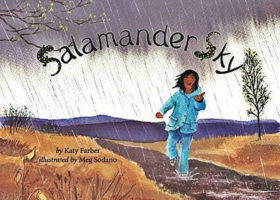
VCE Staff Picks 2018: Books for Nature Nerds
Still unsure what to get your nerdy loved ones this holiday season? Looking for a good book yourself and don’t…
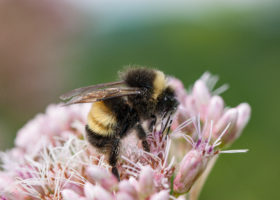
Study Reveals Striking Decline of Vermont’s Bumble Bees
A new study examining 100 years of bumble bee records reveals that almost half of Vermont’s species, which are vital pollinators, have either vanished or are in serious decline.
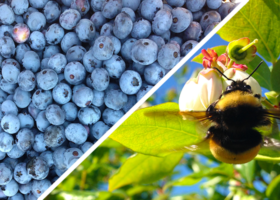
The Secret to Better Berries? Wild Bees
Want bigger, faster-growing blueberries? New research shows wild bees are an essential secret ingredient in larger and better blueberry yields – producing plumper, faster-ripening berries.
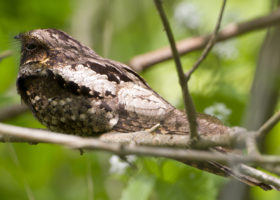
Where are the Whip-poor-wills? 2018 Field Season Update
For more than a decade, VCE has led a project that takes place while most folks are fast asleep. Learn about our 2018 Whip-poor-will Project survey results, and find out how you can get involved!
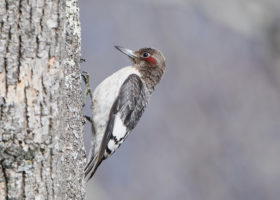
November 2018 Photo-observation of the Month
Congratulations to vtjohn for winning the November 2018 Vermont Atlas of Life iNaturalist photo-observation of the month. The image of a juvenile Red-headed Woodpecker was the most popular photo-observation.
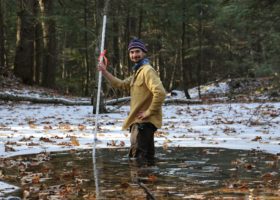
Vernal Pools Through the Year
Picture a vernal pool in your mind’s eye and you’re instantly swept away to springtime. But here at VCE, our vernal pool research spans all seasons. Alex Wells, our VPMon Coordinator, provides this latest update on off-season vernal pool monitoring activities.
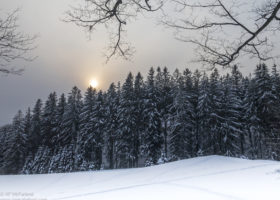
A Field Guide to December 2018
Fear not, during these short days and long nights of December, there’s still plenty of life in the fading light. So here’s some wintry natural history to keep you going.
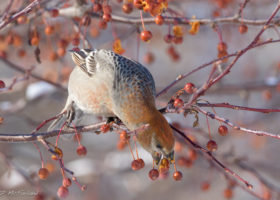
Join the 119th Annual Christmas Bird Count in Vermont
The 119th Christmas Bird Count will take place from December 14 through January 5. This is perhaps the longest running citizen science project in Vermont. Find a count near you this season!
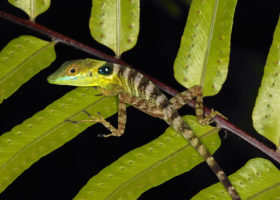
In Haiti, Mass Extinction Underway as Deforestation Nearly Complete
A recent study reveals an unprecedented biodiversity crisis in Haiti. At current rates of deforestation in this overpopulated country, all of its original primary forests—and the majority of species that inhabit them—will vanish within 20 years.
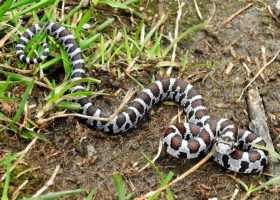
October 2018 Photo-observation of the Month
Congratulations to Joanne Russo for winning the October 2018 Vermont Atlas of Life iNaturalist photo-observation of the month, a beautiful Eastern Milksnake.
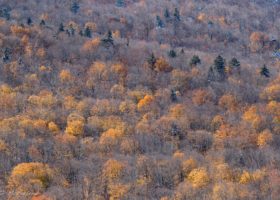
Field Guide to November 2018
As leaves continue to fall and the first flakes begin to fly, the oncoming cold weather seems to bring nature to a standstill. On the contrary, there remains a lot to be discovered in Vermont during this transitional period.
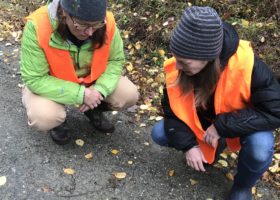
Outdoor Radio: Taking Pictures of Roadkill Can Help Protect Wildlife
There’s a story behind roadkill and people like you can help tell it. Thousands of accidents every year are caused…
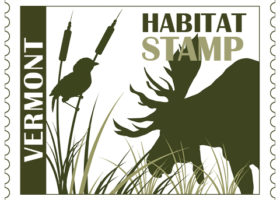
Give Your 2018 Philanthropy the Vermont Habitat Stamp of Approval
Have you purchased your 2018 Vermont Habitat Stamp yet? The Stamp is a great way to support wildlife and public land conservation (and it’s a cool bumper sticker, too!).
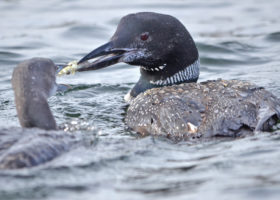
Loon Chicks on Caspian Lake: Flying, Feeding, and Finding A Friend
As the coordinator of the Vermont Loon Conservation Project, VCE’s Eric Hanson receives a good number and variety of stories from volunteer loon watchers. This month he shares VLCP volunteer Nina Sharp’s observations of loon chicks on Caspian Lake. It’s a good read!
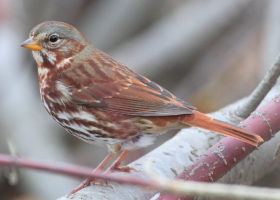
Fox Sparrows: A Boreal Bird on the Move
Fox Sparrows are well known as an early spring and late fall migrant through New England. Recently, though, they have been present in relatively large numbers during the summer in western Maine and northern New Hampshire. An analysis of historical data suggests that the breeding range of Fox Sparrows has expanded southward by several hundred miles over the past 3 decades, and that they are now a regular breeding species in parts of New England.
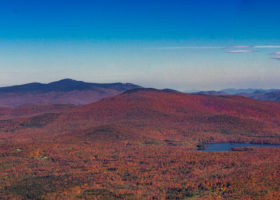
Field Guide to October 2018
October is a month of change. The forested hills fade from green to a kaleidoscope of red and gold that dazzles the eyes. Here’s your field guide to some moments that you might not otherwise notice during these few precious weeks.
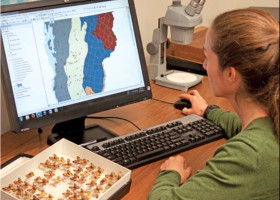
Big data for biodiversity: Vermont Atlas of Life helps GBIF.org surpass 1 billion species occurrences
In July the Global Biodiversity Information Facility (GBIF) surpassed 1 billion species occurrence records with at least one record for over a million species. The milestone symbolizes a major collective achievement, one made possible through the work of the GBIF network, including the Vermont Atlas of Life (VAL) at the Vermont Center for Ecostudies which has contributed over 4 million records and counting!
